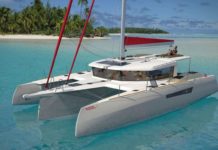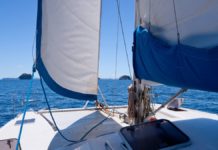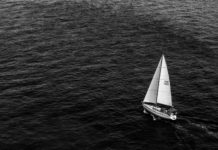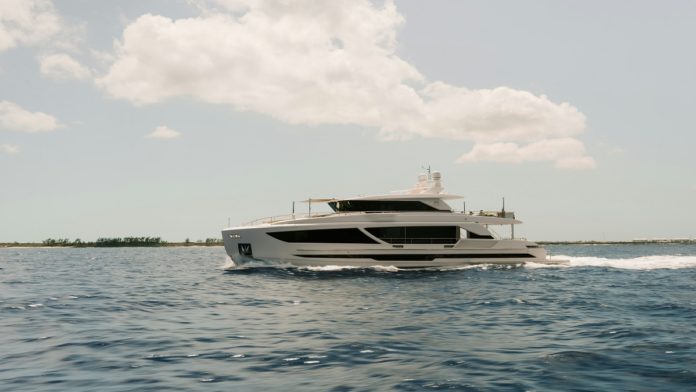
We’ve been asked very often what is the biggest yacht some amateur sailor can rent without any crew. Here is our usual answer on the matter.
First thing first: where is a crew the most needed on a relatively small yacht ?
On a small yacht, the crew is most needed in areas that require constant attention for safety and comfort—mainly navigation, engine operation, docking, and onboard hospitality.
On a small boat, typically, the skipper or captain is therefore the most essential.
Larger vessels between 65 to 80ft need a captain and deckhand with mechanical skills. As the yacht grows, the engine room requires monitoring for proper functioning. A cook/chef can also ensure crew and passengers are well-fed and comfortable.
As always, the bigger the yacht, the more crew is needed for maintenance.
Reminder: not needing a crew for your yacht doesn’t mean you don’t need to have sailing skills or experience to run it

Even the most advanced yachts that are marketed as “crew-free” still demand a solid understanding of navigation, boat handling, and safety protocols.
Autopilot and bow thrusters can help, but they don’t replace good judgment or seamanship. Think of it less as going completely solo, and more as being fully in command—because when something goes wrong, you’re the crew.
Therefore, if you were wondering, yes, mastering sailing skills is crucial for charterers who navigate solo. There is simply no way around it.
Read also: Skipper’s Job And Responsibilities: What You Should Know
How does the yacht type influence the need (or lack of) for crew?
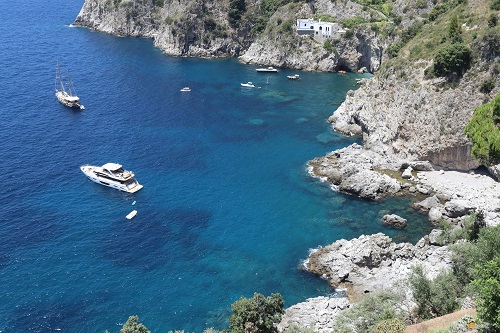
Motoryachts will need crew the larger the boat size
Motoryachts are generally easier to handle from a driving perspective: steering, throttling, and docking are often more intuitive, especially with modern tech like joystick controls and dynamic positioning systems. However, the trade-off comes in the complexity of onboard systems.
However, motoryachts usually have a lot of electronics, a lot of mechanics, more amenities, more maintenance, and more things to monitor which also mean more potential workload for the person at the helm.
As the size of the motoryacht increases, so does the requirement for a larger crew.
Catamarans need less crew than sailboats
Catamarans look large, but they usually require less crew than you think.
Catamarans are known for their stability, ease of handling, and efficient use of space, thanks to their dual hull design.
With their simplified rigging and often smaller sail area, catamarans are easier to maneuver and control, requiring less crew for tasks such as sail handling and navigation.
Additionally, the spacious layout of catamarans allows for greater autonomy and comfort, reducing the need for constant crew assistance.
Overall, the streamlined design and sailing characteristics of catamarans contribute to a decreased need for crew, making them an attractive option for those seeking a more independent sailing experience.
Sailboats need more crew because of the complexity of its rigging
Sailboats typically necessitate more crew due to the intricate rigging and sailing operations involved.
The complexity of managing sails, rigging adjustments, and navigating wind patterns often demands a larger team to ensure smooth sailing and efficient maneuvering.
Even modern sailboats, especially those equipped with advanced automation and user-friendly controls, require active management which can be tough to be operated solo.
Sure, sailing on a sailboat is very rewarding, but it also involves more things to do yourself if you are alone.
Read also: Beginner’s Guide to Chartering: Everything You Need to Know
Usual maximum length of yachts that can be operated alone
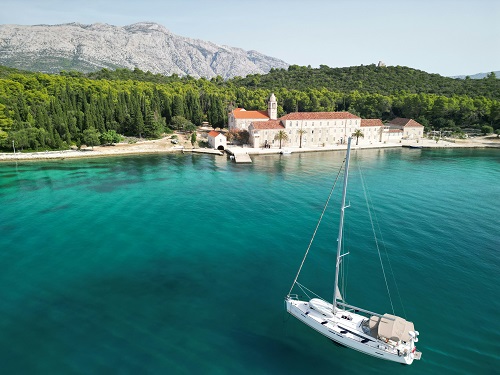
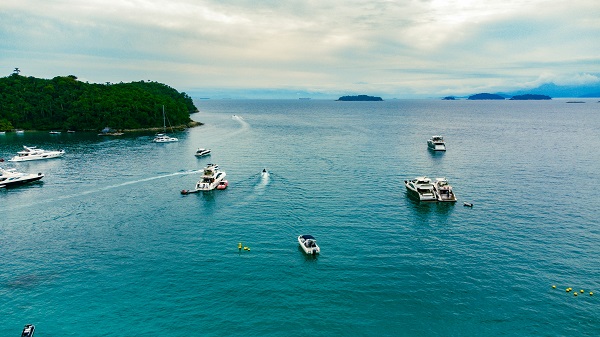
Most sailboats will require a crew above 35ft
Most often for sailboats, 35ft marks the point where a crew becomes necessary.
Sailboats reaching or exceeding 35 feet in length tend to require additional hands on deck due to the increased complexity of managing larger sails, rigging, and navigation systems.
While smaller sailboats can often be handled by a solo sailor, the larger ones always demand more manpower to effectively handle the sails, maneuver in tight quarters, and ensure safe navigation, especially during adverse weather conditions.
Catamarans above 40ft will always need a crew

When it comes to catamarans, thes threshold often shifts around 40 feet in length as almost anything above require a crew.
The inherent design and characteristics of catamarans, with their wide beam and dual-hull configuration, necessitate additional crew members to handle various tasks efficiently.
Larger catamarans, known for their stability and spaciousness, typically demand a crew to manage navigation, sail handling, maintenance, and guest services effectively.
Read also: Yacht Rental With Skipper And Hostess Vs Fully Crewed Charters
Motoryachts above 50ft will usually require a crew
Modern motoryachts often come with bow/stern thrusters, joystick controls, and advanced navigation systems, which make them surprisingly manageable up to about 50 feet.
Beyond that, the beam, draft, and complexity of onboard systems usually demand more help, especially for docking, maintenance, and guest management.
Bests big sailboats models that can be ran by the owner in complete autonomy

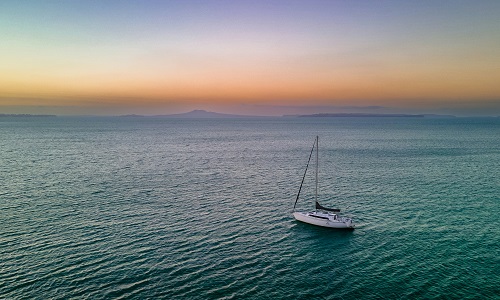
Jeanneau Brio: a 7m sailboat that doesn’t need a skipper
The Jeanneau Brio is a 7-meter sailboat designed for those who prefer to sail solo without needing a skipper. With its manageable size and intuitive design, the Brio offers sailors a sense of independence on the water. Its compact yet functional layout provides enough space for a comfortable sailing experience while keeping things simple. Whether cruising along the coastline or exploring calm waters, the Jeanneau Brio promises a rewarding journey for sailors seeking solitude and adventure.
Django 7: a 7m yacht perfect for a complete bareboat charter journey
Django 7 is a sleek 7-meter yacht ideal for a full bareboat charter adventure. Its compact size offers a cozy yet spacious experience for navigating the open waters. With ample room for a small group or couple, it provides a comfortable setting for exploring the seas independently. From its sturdy construction to its efficient design, Django 7 promises a reliable and enjoyable journey for those seeking a memorable sailing experience.
Read also: Sailing Upwind and Downwind – the Differences
Interesting catamarans/ multihulls models the owner is able to maneuver in complete autonomy
Edel cat 26 : a 9m cata that doesn’t need a skipper
The Edel Cat 26 is a 9-meter catamaran designed for those who want to sail independently without the need for a skipper. Its user-friendly design makes it accessible for sailors of various skill levels, allowing them to enjoy the freedom of navigating the waters on their own terms. With its spacious deck and comfortable accommodations, the Edel Cat 26 offers a relaxing and enjoyable sailing experience for solo adventurers or small groups alike.
Rackam 26: a 9m yacht with efficient performance
Rackam 26 is a 9-meter yacht known for its efficient performance on the water. Its design emphasizes functionality and reliability, making it a popular choice among sailors who prioritize practicality. With a focus on efficiency, Rackam 26 offers a smooth sailing experience, whether cruising leisurely or navigating challenging waters. Its size allows for easy handling while still providing ample space for onboard activities. Overall, Rackam 26 is a dependable option for those seeking a balanced combination of performance and utility in their yacht.
Read also: Our Favorite Power Catamarans To Charter In The BVI
Big motor yachts models that can be maneuver without crew
Prestige 42 Fly: a 12m motor yacht that doesn’t need a skipper
The Prestige 42 Fly is a 12-meter motor yacht designed for those seeking independent cruising experiences without the need for a skipper. With its sleek design and advanced technology, this yacht offers both comfort and control for navigating the open waters. Its spacious interior provides ample room for relaxation and entertainment, while its powerful engines ensure smooth sailing and swift travel to your desired destinations. Whether you’re exploring coastal waters or embarking on a weekend getaway, the Prestige 42 Fly offers a blend of elegance and functionality for self-guided maritime adventures.
Antares 42: a 13m yacht perfect for bareboat charter
The Antares 42 is a 13-meter yacht ideal for bareboat chartering. With its spacious layout and comfortable design, it offers a fantastic experience for those looking to sail without a crew. Its size provides ample room for relaxation and exploration, making it perfect for a leisurely cruise with friends or family.
Conclusion
In conclusion, when considering chartering the biggest yachts available without a crew, it’s crucial to remember that size isn’t everything.
While it may be tempting to go for the largest vessel, it’s essential to choose a size that aligns with your sailing skills and experience level.
Opting for a yacht that exceeds your abilities could lead to unnecessary risks and challenges. Instead, it’s wiser to select a size that you feel comfortable handling solo or with your group.
If you’re unsure about your skills or want to relax and enjoy the trip without worrying about navigation, hiring a skipper is a practical solution. Ultimately, prioritizing safety and enjoyment over sheer size will ensure a more rewarding and stress-free charter experience.


